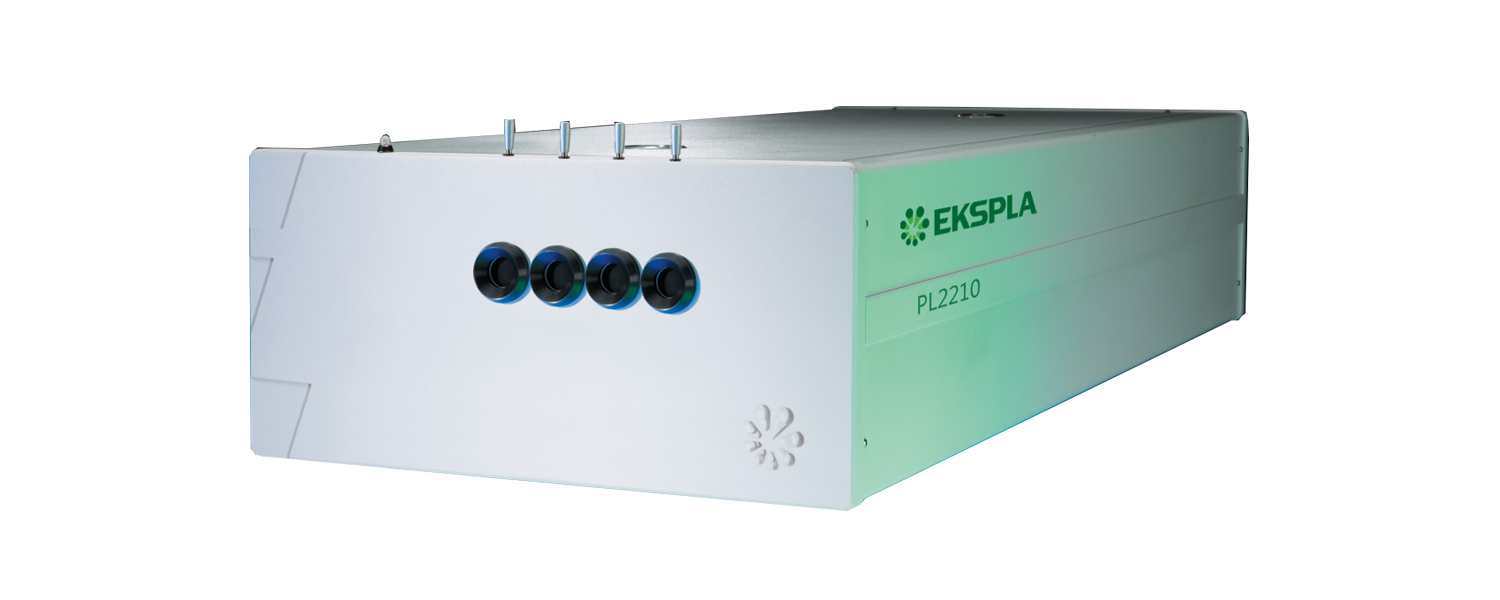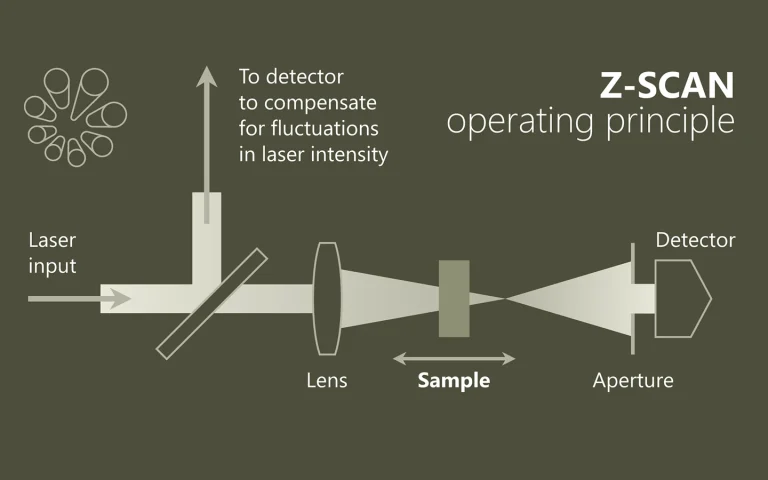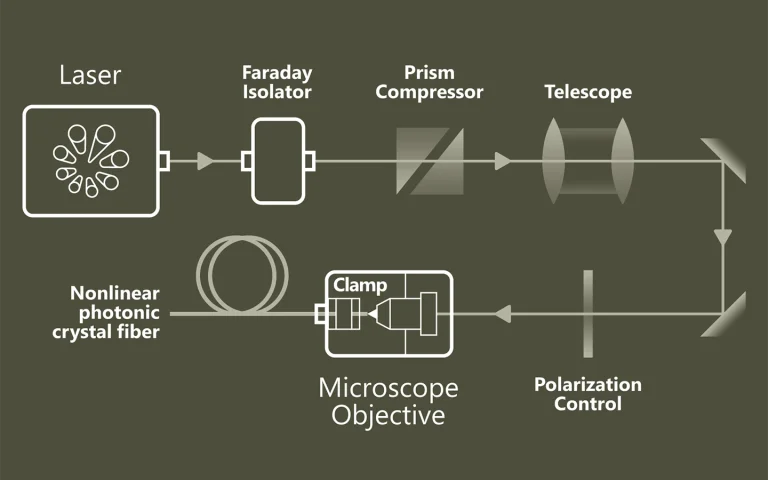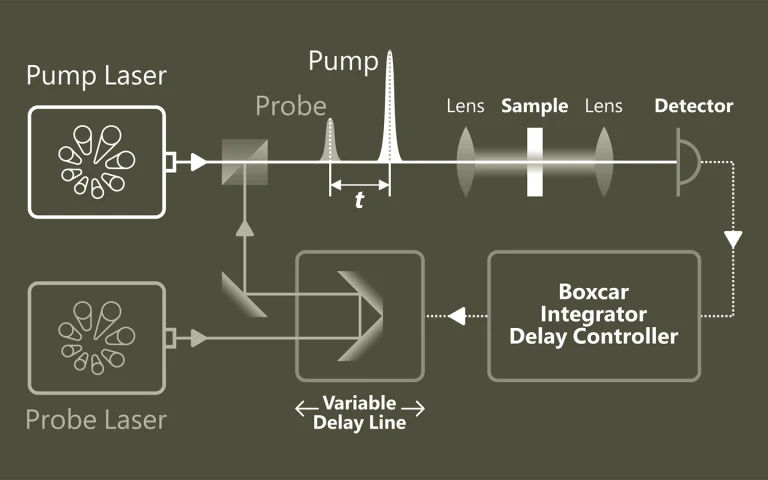PL2210 Series
Diode-pumped high-repetition picosecond Nd:YAG lasers
The systems in the PL2210 series are diode-pumped, mode-locked and in some cases purely air-cooled Nd:YAG solid-state lasers that deliver picosecond pulses at a repetition rate of 1 kHz.

Features
- Up to 5mJ pulse energy at 1kHz repetition rate (higher pulse energy on request)
- Diode-pumped, solid-state design
- Partly purely air-cooled (for PL2210A and PL2210B)
- Turn-Key System
- Low maintenance costs
- Optional streak camera tigger with jitter <10 ps rms
- Control panel
- PC control
- Optional temperature-stabilized second, third and fourth harmonics
Applications
- Time-resolved fluorescence (also for measurements with streak camera)
- Pump & Probe Spectroscopy
- Pumps from OPG/OPA/OPO
- Remote Laser Sensing
- Further applications in the field of spectroscopy and non-linear optics
Applications

At the focal point of non-linearity
In the field of nonlinear optics, the n2 index (Kerr nonlinearity) or the nonlinear absorption coefficient Δα, for example, are determined using Z-scan. Both the real part and the imaginary part of the nonlinear refractive index are measured using the “open” and “closed” methods.

Supercontinuum white light lasers are now an established turn-key light source for a wide range of applications from biomedical imaging to characterization of optical systems.
The advantage of using these laser systems lies in the simultaneous provision of both good focusability and high power over a wide wavelength range.

Pumps. Samples. Understanding.
Pump-probe spectroscopy provides a deep insight into ultrafast processes at the atomic and molecular level. With the help of pulsed lasers, dynamic changes can be tracked with extremely high temporal resolution. Typical applications include the investigation of charge carrier dynamics in semiconductors, the analysis of electron transfer in chemical reactions and the study of light-induced phase transitions in materials.
Applications
Scientific publications
Near infrared light induced plasmonic hot hole transfer at a nano-heterointerface
Z. Lian, M. Sakamoto, H. Matsunaga, J. J. M. Vequizo, A. Yamakata, M. Haruta et al, Nature communications 9 (1), 2314 (2018). DOI: 10.1038/s41467-018-04630-w.
Localized surface plasmon resonance (LSPR)-induced hot-carrier transfer is a key mechanism for achieving artificial photosynthesis using the whole solar spectrum, even including the infrared (IR) region. In contrast to the explosive development of photocatalysts based on the plasmon-induced hot electron transfer, the hole transfer system is still quite immature regardless of its importance, because the mechanism of plasmon-induced hole transfer has remained unclear. Herein, we elucidate LSPR-induced hot hole transfer in CdS/CuS heterostructured nanocrystals (HNCs) using time-resolved IR (TR-IR) spectroscopy. TR-IR spectroscopy enables the direct observation of carrier in a LSPR-excited CdS/CuS HNC. The spectroscopic results provide insight into the novel hole transfer mechanism, named plasmon-induced transit carrier transfer (PITCT), with high quantum yields (19%) and long-lived charge separations (9.2 μs). As an ultrafast charge recombination is a major drawback of all plasmonic energy conversion systems, we anticipate that PITCT will break the limit of conventional plasmon-induced energy conversion.
Silk protein nanofibers for highly efficient, eco-friendly, optically translucent, and multifunctional air filters
K. Min, S. Kim, and S. Kim, Scientific reports 8 (1), 9598 (2018). DOI: 10.1038/s41598-018-27917-w.
New types of air filter technologies are being called because air pollution by particulate matters (PMs) and volatile organic compounds has raised serious concerns for public health. Conventional air filters have limited application and poor degradability and they become non-disposable wastes after use. Here, we report a highly efficient, eco-friendly, translucent, and multifunctional air purification filter that is highly effective for reducing air pollution, protecting the environment, and detecting hazardous chemical vapors encountered in everyday life. Uniform silk protein nanofibers were directly generated on a window screen by an electrospinning process. Optical properties (translucence and scattering) of the silk nanofibrous air filters (SNAFs) are advantageous for achieving viewability and controlling the room temperature. Air filtration efficiencies of the fabricated SNAFs could reach up to 90% and 97% for PMs with sizes under 2.5 and 10 μm, respectively, exceeding the performances of commercial semi-high-efficiency particulate air (semi-HEPA) filters. After use, the SNAFs could be naturally degraded. Furthermore, we demonstrate the ability of SNAFs impregnated with organic dyes to sense hazardous and volatile vapors encountered in everyday life.
Ultrafast z-scanning for high-efficiency laser micro-machining
T. Chen, R. Fardel, and C. B. Arnold, Light: Science & Applications 4 (7), 17181 (2018). DOI: 10.1038/lsa.2017.181.
High-throughput laser micro-machining demands precise control of the laser beam position to achieve optimal efficiency, but existing methods can be both time-consuming and cost-prohibitive. In this paper, we demonstrate a new high-throughput micro-machining technique based on rapidly scanning the laser focal point along the optical axis using an acoustically driven variable focal length lens. Our results show that this scanning method enables higher machining rates over a range of defocus distances and that the effect becomes more significant as the laser energy is increased. In a specific example of silicon, we achieve a nearly threefold increase in the machining rate, while maintaining sharp side walls and a small spot size. This method has great potential for improving the micro-machining efficiency of conventional systems and also opens the door to applying laser machining to workpieces with uneven topography that have been traditionally difficult to process.
